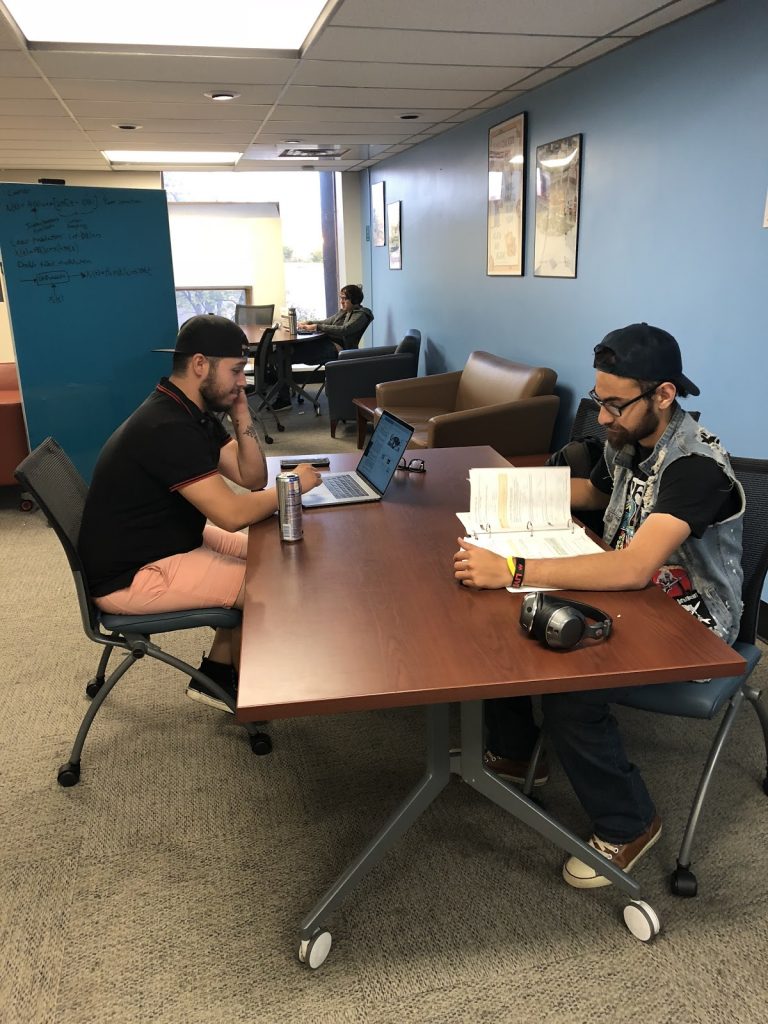By Jazzy Zama and Sarah Ihlefeld / NM News Port
A lot of factors play into New Mexico’s low high school graduation rate, which, at 71%, is one of the lowest in the country, according to the New Mexico Public Education Department.
These factors include truancy, lack of classroom engagement, trouble at home, poor performing schools and other circumstances. So, imagine the added hurdles of living in foster care or in a juvenile detention center.
“I had a lot of times when school counselors told me ‘maybe you should just drop out and get your GED,” said Andrew Salazar, who spent seven years trying to finish high school and attended four schools in the first two years . “Whether it was APS, Los Lunas, Belen or Roswell, I got it numerous times.”

“I remember the day. It was October 18th, 2009, when I entered the foster care system. Police came to our house and realized there was no adult there,”
Salazar said he spent four years in a group home in Roswell where he felt unmotivated in school because of how far behind he was.
“For the longest time I thought I wasn’t going to graduate and that my teachers didn’t care,” Salazar said.
But Salazar was determined to walk across the graduation stage. And he was helped by a local nonprofit called NMCAN, which works with foster youth.
By age 20, Salazar graduated from the alternative school Engage Santa Fe.
“A traditional high school is really fast paced especially for someone who has moved a lot like me,” Salazar said. “For that reason Engage really helped me… and is the reason I was able to graduate.”
Salazar credits NMCAN’s “Back on Track” program with helping him navigate his way to graduation and then with applying for college.
NMCAN Executive Director Ezra Spitzer says his group exists to help foster kids make the tough transition to adulthood.
“We help kids from all parts of Albuquerque,” Spitzer said. “The ones we help are known as disconnected youth. They might have come from the foster system or JJS (Juvenile Justice Services), but we help them reconnect into the community and get them on track with their goals.”
According to data by child trends, only 48 percent of foster youth who “age out” of the foster care system graduate from high school at the time of discharge, and only 54 percent graduate from high school two to four years after discharge.

Spitzer says that’s where NMCAN can make a real difference.
“Back on Track was created to get kids re-engaged,” Spitzer said. “We focus on getting them back into their educational goals whether it be a GED program or high school graduation, getting them enrolled in secondary institutions and supporting them in their first year once they are enrolled.”
Spitzer calls NMCAN a “forever” community, meaning that once youths enter the program they can stay involved as long or whenever they need.
“We treat it like a family. We say forever — once you are in you are in,” Spitzer said. “It’s not about checking boxes, it’s about relationship, getting to know the person, who they are, and we need to meet them where they are. It’s going to be different for each young person.”
Another NMCAN participant is Jesus, who, for personal reasons, would not agree to share his last name.
Jesus describes a difficult childhood that involved abuse and neglect. At age 5 he and his sibling were taken from his family by New Mexico’s Children, Youth and Families Department. After time in foster care, Jesus and his siblings were all adopted.
During his junior year in high school, Jesus was referred to the New Mexico Juvenile Justice System and placed in a teen detention center.
He then chose to go into treatment foster care in order to receive the therapy and help he needed. Treatment foster care allows youth to continue their treatment and therapy when they get out of the detention center.
“My personality changed, it was just this crazy transition, and I became a different person. I had options in my last couple months of treatment because I had finished therapy really quickly. I wanted to stay a little longer and keep doing what I was doing, I wasn’t ready to go back into society,” Jesus said.
Jesus was able to continue his high school education while in the Detention center. He graduated from Los Lunas high school and attended CNM in the fall.
“My education was never disrupted during my time in the Juvenile center, I always made sure to take classes that were going to transfer over.”
With the help of NMCAN, Jesus was able to create a scholarship program for college. He’s now a senior at the University of New Mexico, majoring in Psychology. He also works as an advocate for children who went through the kind of struggles he did.
“I did not let what I went through define me,” Jesus said. “I focused on my education and myself because I knew it was something I can excel in, that I can do well in, regardless of my situation and my circumstances. I am just not gonna let people get in the way of my success.”
As the experiences of Andrew Salazar and Jesus make clear, it takes a support system to help disadvantaged youths find their way to graduation.
Angelo Gonzales directs the Albuquerque-based project, Mission Graduate.
“If we don’t have intervention programs to help kids when they fall off track it’s very easy to fall off track and never get back,” Gonzales said. “And then, on top of that, once you get into the JJS (Juvenile Justice Services), it’s difficult to get back.”

Mission Graduate operated under the United Way of Central New Mexico. It’s mission is to improve subpar graduation rates. The goal is to reach 60,000 new graduates with college certificates and degrees in central New Mexico by the year 2020.
Mission Graduate depends on a broad array of schools and community groups to work together using a broad array of strategies to help students stay on the path to education.
Gonzales says one strategy is to have a wide range of prevention efforts in place, which can include incentives to improve attendance. Another focus is on kids who are already chronically absent and finding mentors to help them.
“When kids are not in school they’re somewhere. Some kids are just at home, maybe they’re playing videogames or they’re caregiving, Gonzales said. ”We know that’s an issue for many of our young people. They may be taking care of siblings or working to support families.”
According to the Mission Graduate Summer 2017 Data Report there was a 3.1% increase in high school graduation during the 2015-2016 school year. The new strategy Mission Graduate just implemented for the 2017-2018 is still in progress, with no data yet to show. Meanwhile, the “Back on Track” program is still a new program for NMCAN and there is no data yet to show for it, according to Spitzer. The data for Back on Track will be released at the end of the year.
For more follow Jazzy Zama and Sarah Ihlefeld on twitter.